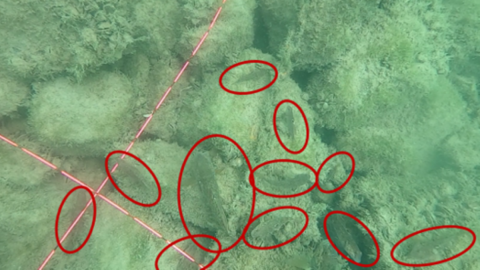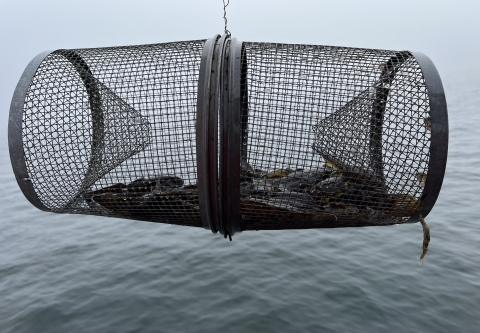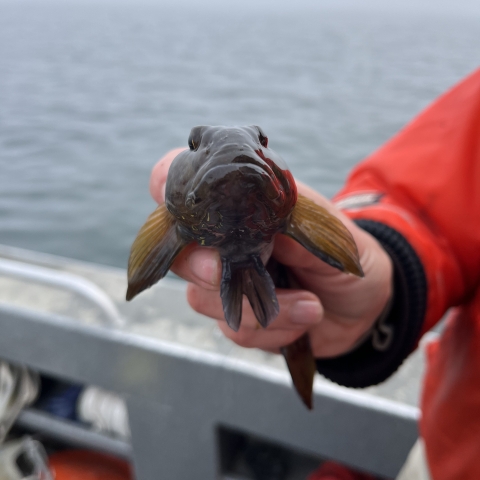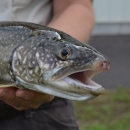States
New YorkEcosystem
LakeLower Great Lakes FWCO staff are piloting a round goby (Neogobius melanostomus) study on a small reef (about 210 m2) in Lake Ontario. We are testing whether removal of round goby on a spawning reef can provide any localized improvement of lake trout recruitment. Round gobies are invasive to the Great Lakes, and while they are proba
bly best known as predators to invasive dreissenid mussels (zebra and quagga mussels), there is also evidence that they consume lake trout eggs and larvae. We have observed round gobies on this reef near the same time as lake trout spawning, and because lake trout eggs take a long time to hatch, they are vulnerable to predation for several months. Round goby abundance estimates are being determined using a combination of underwater video camera footage, which is being analyzed by two independent readers, and passive fishing with minnow traps set overnight. Across eight days of fishing, we set 254 traps and caught 1649 round gobies. The catch was 19% female and 81% male. Females were significantly smaller than males. We observed a shift in total length over time, as later catches contained longer round gobies. Indeed, this pilot study showed that it is feasible to catch large amounts of round gobies and use cameras for reef observation.
The office is setting out egg traps now to see if lake trout egg-laying and hatch out improves with the removal of round gobies. We will then survey lake trout egg and larval abundance in the coming months to see if round goby removal was effective at improving lake trout recruitment. Because we lack baseline information to which we can compare our findings, we plan to repeat this study on another reef and collect baseline abundance data before beginning round goby removal. In the future, we hope to increase the scale of this project by studying spawning reefs across Lake Ontario. We are also interested in studying reef recolonization by round gobies after removal and using acoustic telemetry to study round goby movement. This is one step in a multi-faceted effort to better understand lake trout recruitment in Lake Ontario, and to determine next steps for ensuring basin-wide lake trout restoration efforts will lead to self-sustaining populations.






